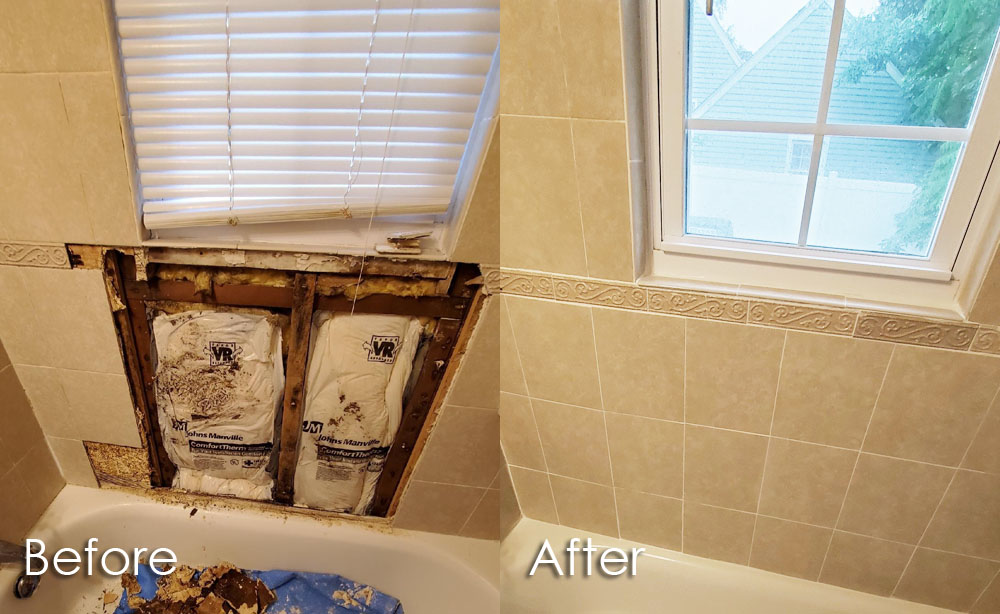Are you currently hunting for related information concerning How to Fix a Water Damage Bathroom?

The washroom is incredibly prone for moist build-up and potential water damages as a result of the frequent use of water in it. This write-up offers easy examination techniques to help finding water damages hazards.
The regular use water in the washroom makes it extremely susceptible for damp buildup and potential water damage. By checking it consistently, you can reduce water associated problems.
The adhering to collection of inspections is simple to execute and also should be done once in every three months in order to keep your shower room healthy and also to avoid prospective water problems brought on by the bath tub, the shower, pipeline joints as well as plumbing, sinks, cupboards, as well as the bathroom
Do not overlook carrying out these evaluations and be comprehensive while performing them. Keep in mind that these straightforward examinations can conserve you a great deal of cash by offering early indications for water damages
Sinks and also Cabinets
Sinks and also cupboards are subjected to moisture and moisture day-to-day as well as are typically forgotten. Evaluate consistently under the sink and also on the kitchen counter over it. Fix any type of drip in the trap as it may recommend drainpipe issues. Take a look around the sink, sluggish draining pipes may show an obstructed drainpipe. Replace sink seals if they are broken or loose.
Bathtub and also Shower
The shower and also tub need special attention and also upkeep. Check the floor tiles as well as replace if fractured. Make certain that there is no missing cement in between the tiles. Evaluate as well as replace fractured caulking at joints where the walls fulfill the floor or the bath tub. Blocked drains and also pipes problems will certainly prevent the bath tub from drying and might indicate significant troubles underneath the bathtub. Talk to a professional quickly to avoid structural damages. Pay attention to stainings or soft areas around the tub walls as they might indicate an interior leak.
Plumbing
Signs for water damages are hard to find since a lot of pipes are set up inside the walls.
Pay special focus to flooring and also walls dampness as well as stains as they might indicate an undetectable plumbing trouble. Inspect dampness levels in adjacent areas as well.
The Commode
The toilet is a prone water joint. Check the water lines as well as look for leaks around the bathroom seat, in the tube, and under the water storage tank. If you identify any type of indicators of moisture on the floor around the bathroom, look for leaks in the toilet rim and also tank seals.
Understand that hanging commode dish deodorants boosts the opportunities for clogs.
Water Damage Signs In The Bathroom To Avoid Cleanup
Musty smell
This is one of the easiest signs to catch because musty smells are so odorous. The damp, earthy, moldy smell should be a big red flag. The smell will develop when moisture gets trapped in surfaces, and begins to facilitate mold growth. Leaking pipes under cabinets, inside walls, and behind shower fixtures will cause moisture to stay trapped and not dry, which will lead to mold growth and spread. As soon as you notice any musty smells in your bathroom, have it checked for hidden water damage and cleanup signs.
Visible mold
If the smell isn’t there to give it away, sometimes you will actually see mold growth. Finding mold in your bathroom is a serious problem, because mold is very harmful to your health. By the time mold growth is visible, it also means that water damage has already occurred and been present for some time. The only way the mold problem can be resolved is to find the source of the moisture and get it stopped. To safely and adequately remove mold, you need to have professionals handle the remediation. Do not waste any time in getting mold problems addressed, fixed, and sanitized so that you can protect you and your family from the many respiratory symptoms caused by mold exposure.
Damaged floors
Bathroom floors should be able to withstand some exposure to water while still remaining in good condition. However, when excess exposure or water leaks occur, they will begin to damage even the most water-resistant flooring. If you notice any cracking, bubbling, staining, or warping on your bathroom floors, there is probably a water leak somewhere causing the distortion. If you notice areas of the floor have become softer, or even have a spongy feeling, there is probably damage to the subfloor. Subflooring is typically made up of plywood. When plywood is exposed to water or moisture, it will absorb it. Once it has become saturated, the weight of the excess water will cause the wood to swell and soften. Check the floors in your bathroom frequently to catch any of these sings before they lead to damaged subflooring.
Changes on walls
When water leaks behind walls, it will cause changes in the drywall. Peeling plaster, blistering paint, and soggy wallpaper are all good indicators that excess water is building up behind the wall. Water leaking behind drywall will cause it to swell and be soft to the tough. If you start to notice gaps along the trim of your walls, or where tile meets the wall, it could also be a strong indicator that there is a leak behind the wall. Any changes, distortion, or damage on the walls should be evaluated as soon as you notice it to prevent further water damage and cleanup.

We had been guided to that write-up on How to Prevent Bathroom Water Damage from an associate on a different website. You should take a moment to promote this article if you appreciated it. Kudos for your time. Visit us again soon.
Source